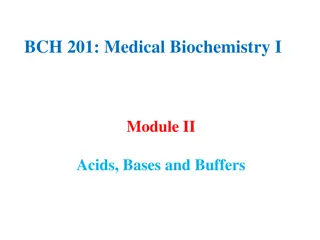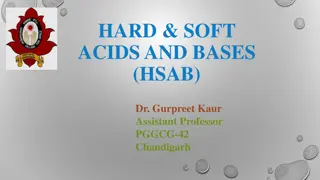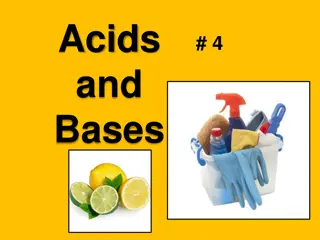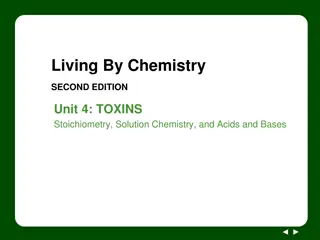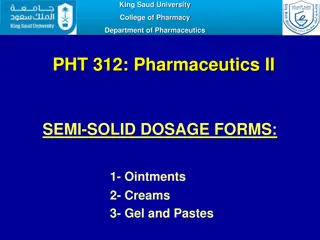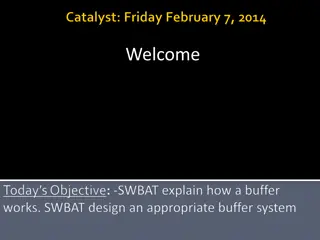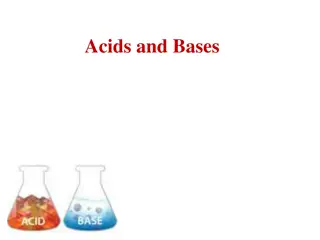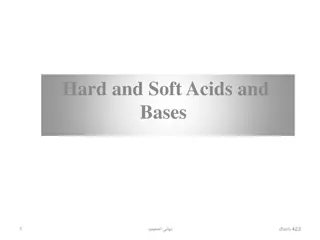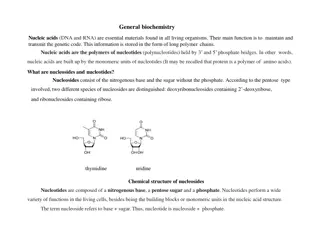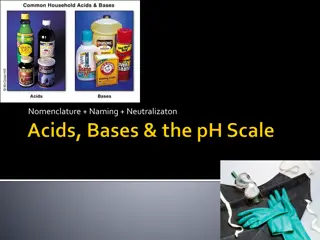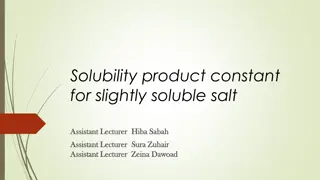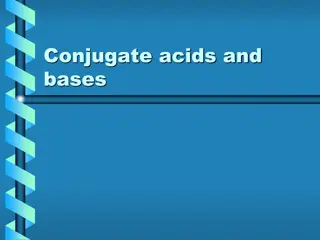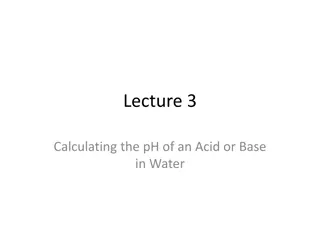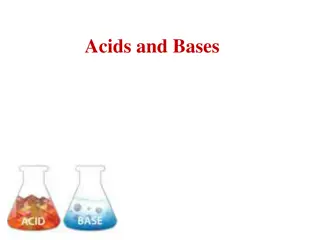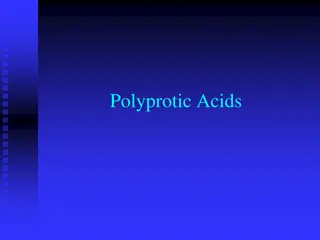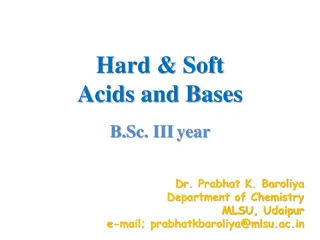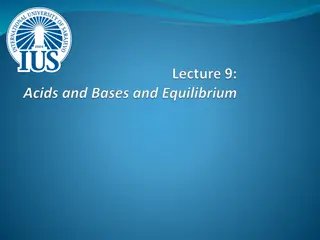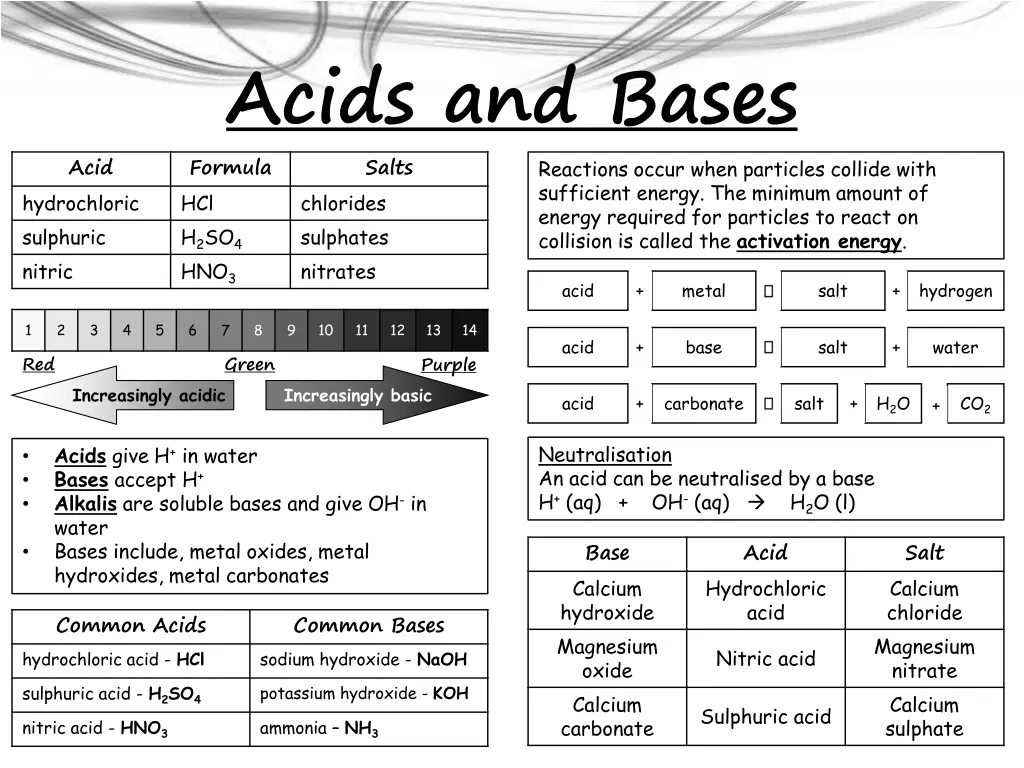
Understanding Acids, Bases, and Salts in Chemistry
Explore the concepts of acids, bases, and salts in chemistry, including their formulas, reactions, and properties. Learn about neutralization, formation of salts, and methods to create soluble and insoluble salts. Discover common acids and bases, as well as practical applications of salts in various processes.
Download Presentation

Please find below an Image/Link to download the presentation.
The content on the website is provided AS IS for your information and personal use only. It may not be sold, licensed, or shared on other websites without obtaining consent from the author. If you encounter any issues during the download, it is possible that the publisher has removed the file from their server.
You are allowed to download the files provided on this website for personal or commercial use, subject to the condition that they are used lawfully. All files are the property of their respective owners.
The content on the website is provided AS IS for your information and personal use only. It may not be sold, licensed, or shared on other websites without obtaining consent from the author.
E N D
Presentation Transcript
Acids and Bases Formula HCl chlorides H2SO4 HNO3 Acid Salts Reactions occur when particles collide with sufficient energy. The minimum amount of energy required for particles to react on collision is called the activation energy. hydrochloric sulphuric nitric sulphates nitrates acid + metal salt + hydrogen 1 2 3 4 5 6 7 8 9 10 11 12 13 14 acid + base salt + water Red Green Purple Increasingly acidic Increasingly basic acid + carbonate salt + H2O CO2 + Neutralisation An acid can be neutralised by a base H+ (aq) + OH- (aq) H2O (l) Acids give H+ in water Bases accept H+ Alkalis are soluble bases and give OH- in water Bases include, metal oxides, metal hydroxides, metal carbonates Base Calcium hydroxide Magnesium oxide Calcium carbonate Acid Salt Calcium chloride Magnesium nitrate Calcium sulphate Hydrochloric acid Common Acids hydrochloric acid - HCl Common Bases sodium hydroxide - NaOH Nitric acid sulphuric acid - H2SO4 nitric acid - HNO3 potassium hydroxide - KOH Sulphuric acid ammonia NH3
10 Questions What scale is used to measure how acidic or alkaline a substance is? What in the name and formula of the acid that can be used to make magnesium chloride from magnesium ribbon? What is the definition of an acid? What is the difference between an alkali and a base? What gas is formed when an acid reacts with a metal? How can we test for this gas? What is the name of the salt formed when Na2O reacts with HNO3? 1. 2. 3. 4. 5. 6. 7. Balance and complete the following reactions: 1. __Mg (s) + __HCl (aq) __MgCl2 (aq) + __H2 (g) 2. __Al2O3 (s) + __HCl (aq) __AlCl3 (aq) + __H2O (l) 3. __Na2O (s) + __H2SO4 (aq) Acids and Bases
Salts Soluble salts Metal can be reacted with an acid until the metal is used up. Excess metal can be filtered off. Water can be evaporated from the solution and the salt left to crystallise Disadvantage: not all metals are suitable; some are too reactive and others are not reactive enough. Place a known volume of alkali in a beaker Add an indicator Add acid dropwise until the solution is neutral. Record the amount of acid required. Mix the same volume of alkali and acid, evaporate off some of the water and leave to crystallise Insoluble salts Insoluble salts can be made by mixing appropriate solutions of ions so that a precipitate is formed. acid + metal salt + hydrogen acid + carbonate salt + H2O CO2 + The precipitate can be separated using filter paper, washed with distilled water and left to dry. acid + base salt + water All nitrates are soluble, all sodium salts are soluble. acid + alkali salt + water Ammonia dissolves in water to produce an alkaline solution. It is used to produce ammonium salts. Ammonium salts are important as fertilisers. Precipitation can be used to remove unwanted ions from solutions, for example in treating water for drinking or in treating effluent.
10 Questions Nickel sulphate (a soluble salt) can be made by adding an excess of insoluble nickel oxide to sulphuric acid until no further reaction occurs. 1. 2. 3. 4. 5. 6. Give an observation that would show you that the reaction is complete? What equipment could be used to removed the excess nickel oxide? What is the name of this separation method? How you could produce crystals of nickel sulphate from nickel sulphate solution? What other reactant could be added to H2SO4 to make nickel sulphate? What is the formula of nickel (II) sulphate? Silver chloride is an insoluble salt which is formed as a precipitate when silver nitrate and sodium chloride solutions are mixed together. 7. 8. 9. 10. Write a word equation for this reaction. What is the formula of silver (I) chloride? After mixing the reactants how could the insoluble salt be separated? Lead nitrate and sodium sulphate are reacted together in solution. Name the two salts made in this reaction? Salts
Mark Scheme Acids and Bases 1. pH scale 2. Hydrochloric acid (HCl) 3. Acids give H+ in water 4. Alkalis are soluble bases and give OH- in water. 5. Hydrogen 6. Squeaky pop (heard when an ignition source is brought near). 7. Sodium nitrate Salts 1. 2. 3. 4. 5. 6. 7. silver nitrate Temperature would stop rising other Filter paper + filter funnel + conical flask Filtering Leave to evaporate Nickel metal, Ni (s) NiSO4 sodium chloride silver chloride sodium nitrate + + 8. Mg (s) + 2HCl (aq) MgCl2 (aq) + H2 (g) 8. 9. 10. lead sulphate (and) sodium nitrate AgCl Filtering 9. Al2O3 (s) + 6HCl (aq) 2AlCl3 (aq) + 3H2O (l) 10. Na2O (s) + H2SO4 (aq) Na2SO4 (aq) + H2O (l)


